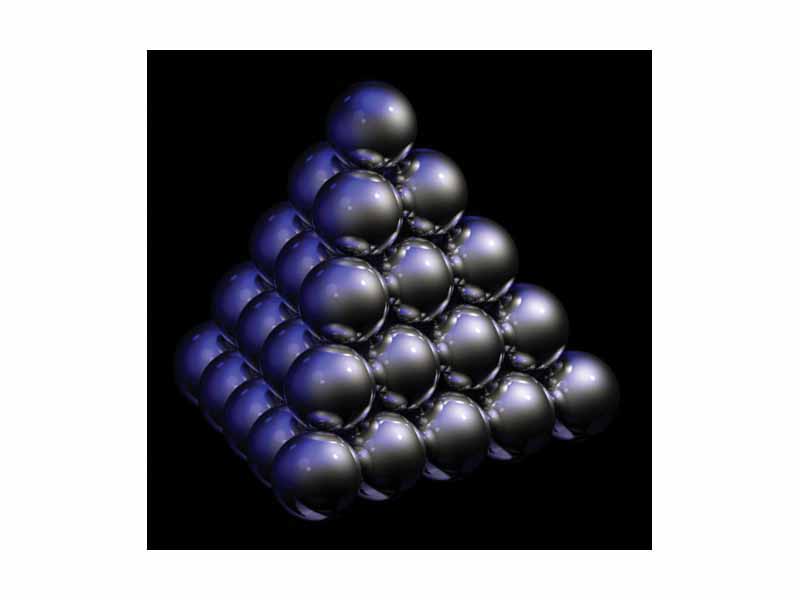Here are some perspectives on entropy differences among states of matter to help improve your understanding of the concept of entropy. Comparing a solid to a liquid, generally, the distance between molecules (or atoms in an elemental crystal) is about the same but the average ligancy is less is the liquid. In other words, particles in a liquid have fewer bonding partners, so in terms of entropy, the increase of entropy in the fluid can be computed similarly to the computation of the entropy of mixing where there has been the addition and mixture of holes.
A second interesting perspective: with the transition from a liquid to a gas, the entropy of vaporization (which equals the ratio of the heat of vaporization to the temperature) is nearly constant across most substances. Higher temperature boiling substances require the addition of more heat to boil, because the boiling point is a measure of the amount of molecular agitation necessary to overcome intermolecular force; the boiling point is an indication of the magnitude of these forces. At vaporization, the kinetic energy of the particles, measured by the temperature, has grown sufficient for the random interplay of energy among its possible forms within the substance to increase the electrostatic potential energy along lines of intermolecular force to a degree sufficient to lead to molecular separation. This relative balance between the electrostatic potential energy increase (the heat flow required from the surroundings) and the amount of kinetic energy present in the particles (gauged by the temperature), equals the entropy change (ΔH/T)).
A third interesting fact is that symmetry of the molecules has a pronounced effect on the melting point, but not the boiling point (the greater the symmetry, the higher the melting point). This is an advanced concept. If molecules are symmetrical, then there will not be as great an increase in disorder when they move from solid to liquid. Flipping over does not change anything, so there is not as much order bound up in the crystal, so there is not so great a loss of the order of crystallization in the melting process, which makes melting somewhat less favorable. Think about how much more easily a molecule can go in the reverse direction (back to crystal) if it does not have to hit it just right.
A second interesting perspective: with the transition from a liquid to a gas, the entropy of vaporization (which equals the ratio of the heat of vaporization to the temperature) is nearly constant across most substances. Higher temperature boiling substances require the addition of more heat to boil, because the boiling point is a measure of the amount of molecular agitation necessary to overcome intermolecular force; the boiling point is an indication of the magnitude of these forces. At vaporization, the kinetic energy of the particles, measured by the temperature, has grown sufficient for the random interplay of energy among its possible forms within the substance to increase the electrostatic potential energy along lines of intermolecular force to a degree sufficient to lead to molecular separation. This relative balance between the electrostatic potential energy increase (the heat flow required from the surroundings) and the amount of kinetic energy present in the particles (gauged by the temperature), equals the entropy change (ΔH/T)).
A third interesting fact is that symmetry of the molecules has a pronounced effect on the melting point, but not the boiling point (the greater the symmetry, the higher the melting point). This is an advanced concept. If molecules are symmetrical, then there will not be as great an increase in disorder when they move from solid to liquid. Flipping over does not change anything, so there is not as much order bound up in the crystal, so there is not so great a loss of the order of crystallization in the melting process, which makes melting somewhat less favorable. Think about how much more easily a molecule can go in the reverse direction (back to crystal) if it does not have to hit it just right.
 The WikiPremed MCAT Course is a comprehensive course in the undergraduate level general sciences. Undergraduate level physics, chemistry, organic chemistry and biology are presented by this course as a unified whole within a spiraling curriculum. Please read our policies on Privacy and Shipping & Returns. Contact Us. MCAT is a registered trademark of the Association of American Medical Colleges, which does not endorse the WikiPremed Course. WikiPremed offers the customers of our publications or our teaching services no guarantees regarding eventual performance on the MCAT. The WikiPremed MCAT Course is a comprehensive course in the undergraduate level general sciences. Undergraduate level physics, chemistry, organic chemistry and biology are presented by this course as a unified whole within a spiraling curriculum. Please read our policies on Privacy and Shipping & Returns. Contact Us. MCAT is a registered trademark of the Association of American Medical Colleges, which does not endorse the WikiPremed Course. WikiPremed offers the customers of our publications or our teaching services no guarantees regarding eventual performance on the MCAT.

WikiPremed is a trademark of Wisebridge Learning Systems LLC. The work of WikiPremed is published under a Creative Commons Attribution NonCommercial ShareAlike License. There are elements of work here, such as a subset of the images in the archive from WikiPedia, that originated as GNU General Public License works, so take care to follow the unique stipulations of that license in printed reproductions. |
